
During my time at Prezi, I completed one large project: sharing prezis, and several smaller projects, such as designing edge case interactions, the Prezi Viewer Lite on mobile as well as some prezi templates (shown as a separate project).
During my time at Prezi, I completed one large and several smaller projects, such as designing some edge case interactions and the Prezi Viewer Lite on mobile, as well as some prezi templates (shown as a separate project).
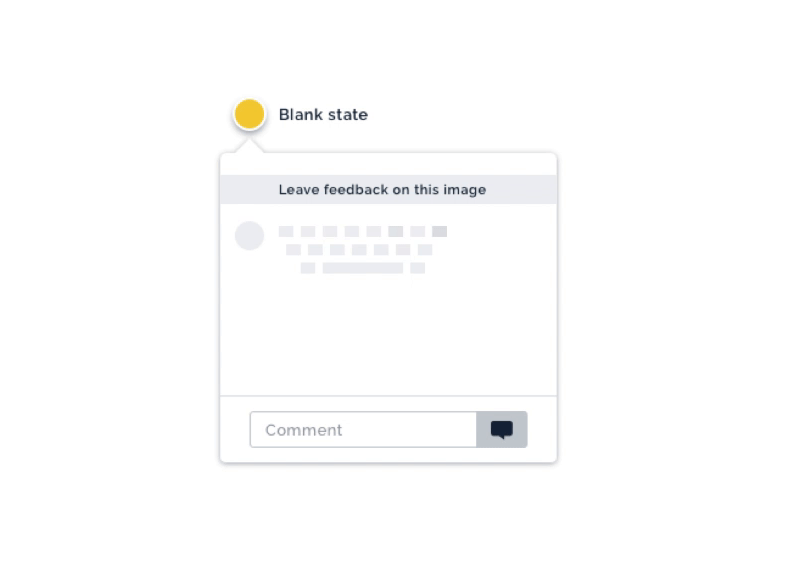
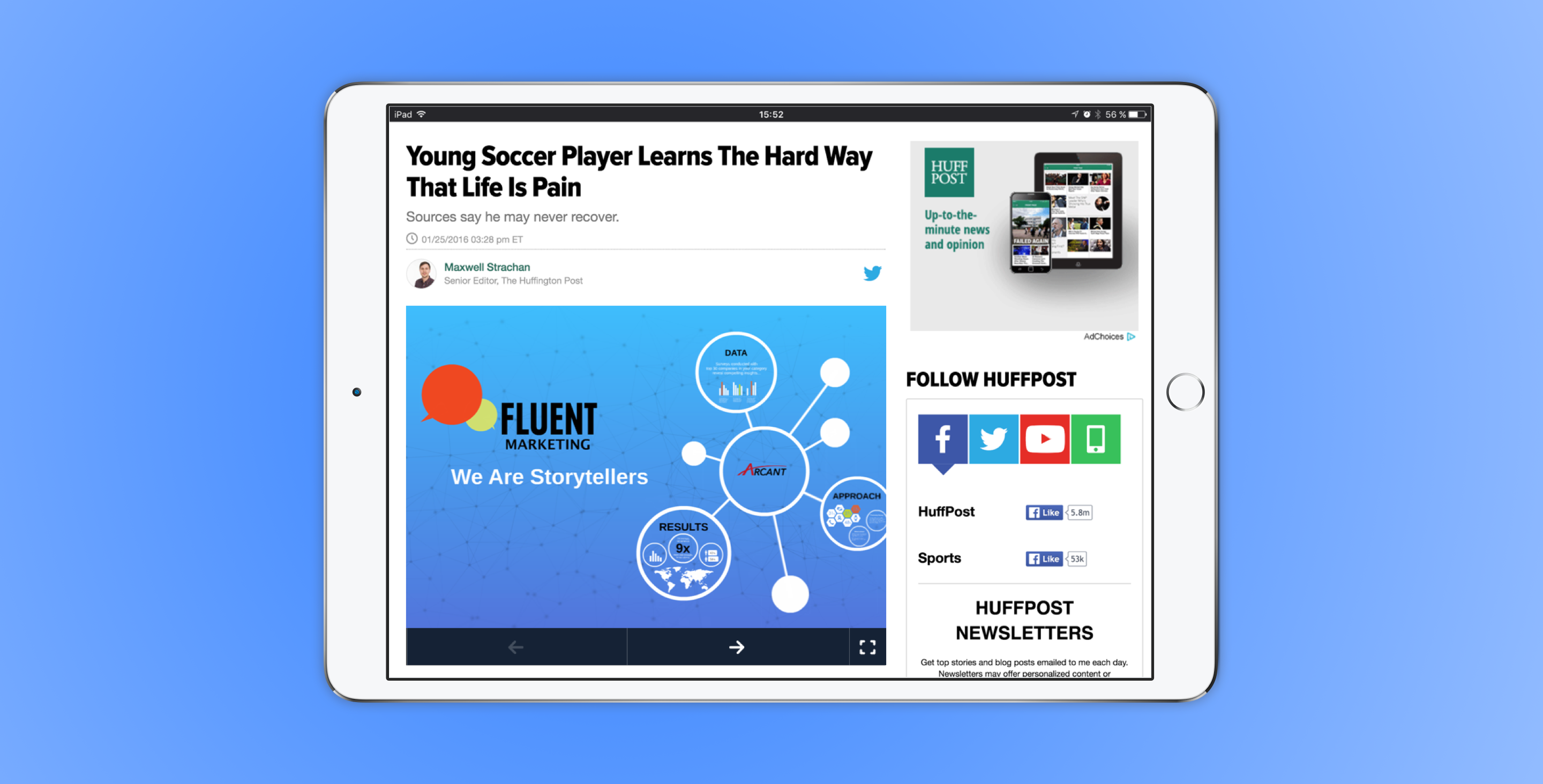
The embedded Prezi Viewer Lite was our first directly implemented project, which enabled viewing prezis without leaving the currently viewed webpage, eg. on the Huffington post mobile site. Since its launch, the mobile views greatly increased.
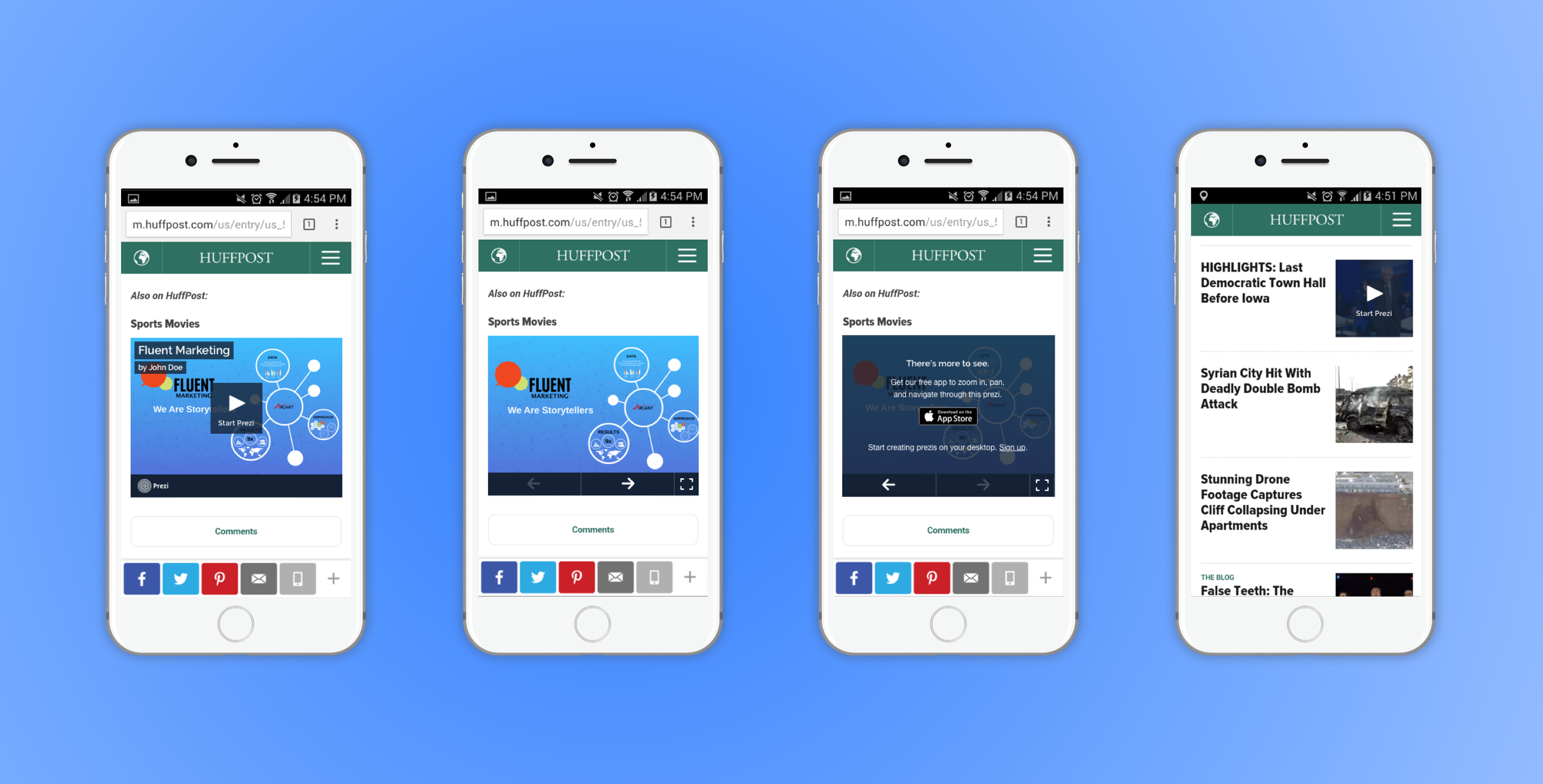
Redesign sharing prezis
Objective: Design the new way of sharing presentations with the new customer base of Prezi Business in the center.
Privacy became a much stronger priority as the company's focus moved from education to enterprise users.
Research
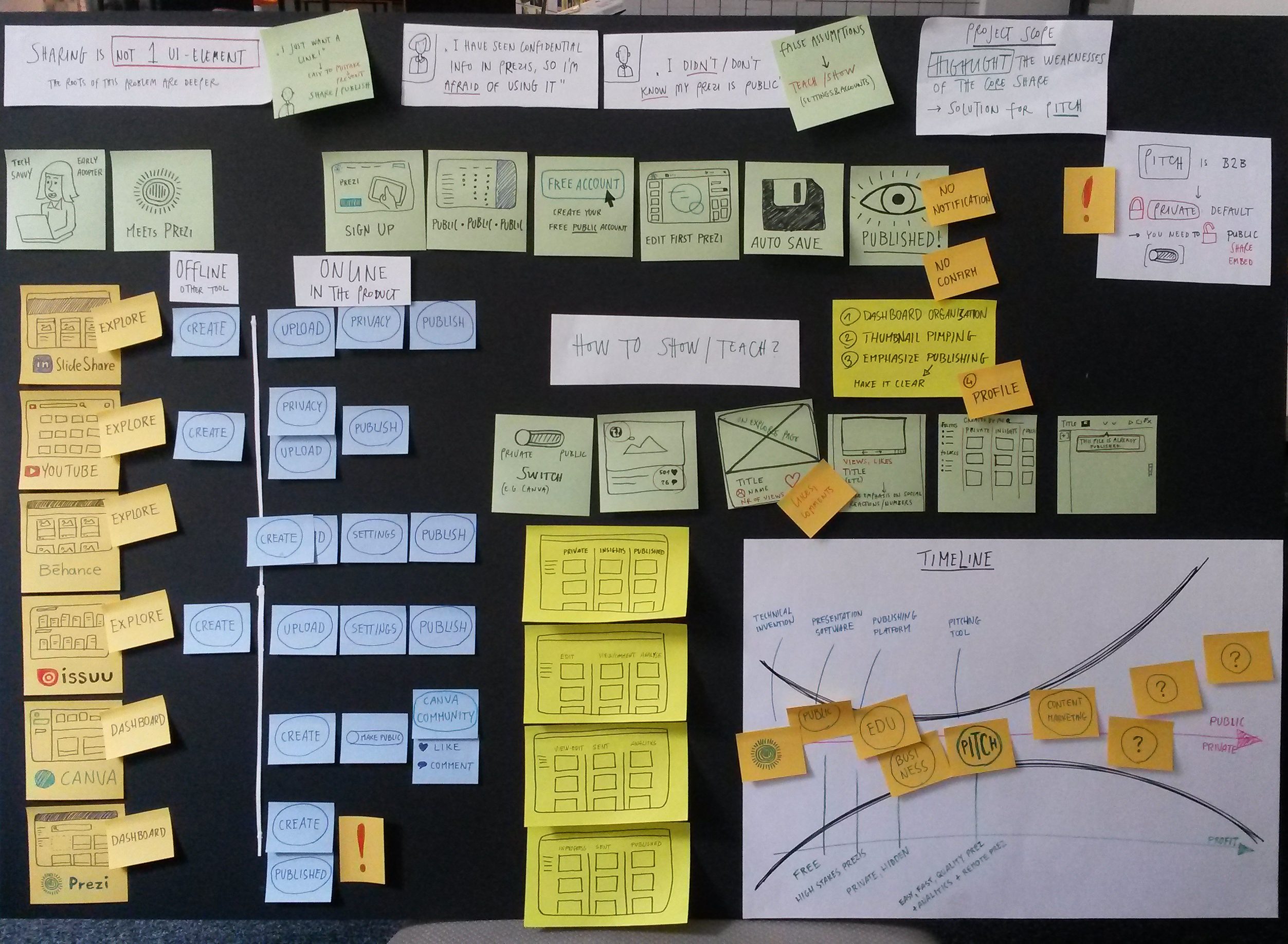
As a team of 2 designers, we needed to find the root cause of the problems, rethink the entire function and how is it connected to other parts of the product.
We collected and summarized the existing research (interviews, etc) of the problem history in the company, did our own interview and collected the questions they inspired. We also looked at competitor’s solutions and best practices.
Then we selected and highlighted the problems to solve and the opportunities to build on: making privacy a top priority by clearly separating different ways of sharing, such as inside the company, with clients, and with the general public. (We used the already existing Prezi personas.)
The NDA ate the empty textboxes!
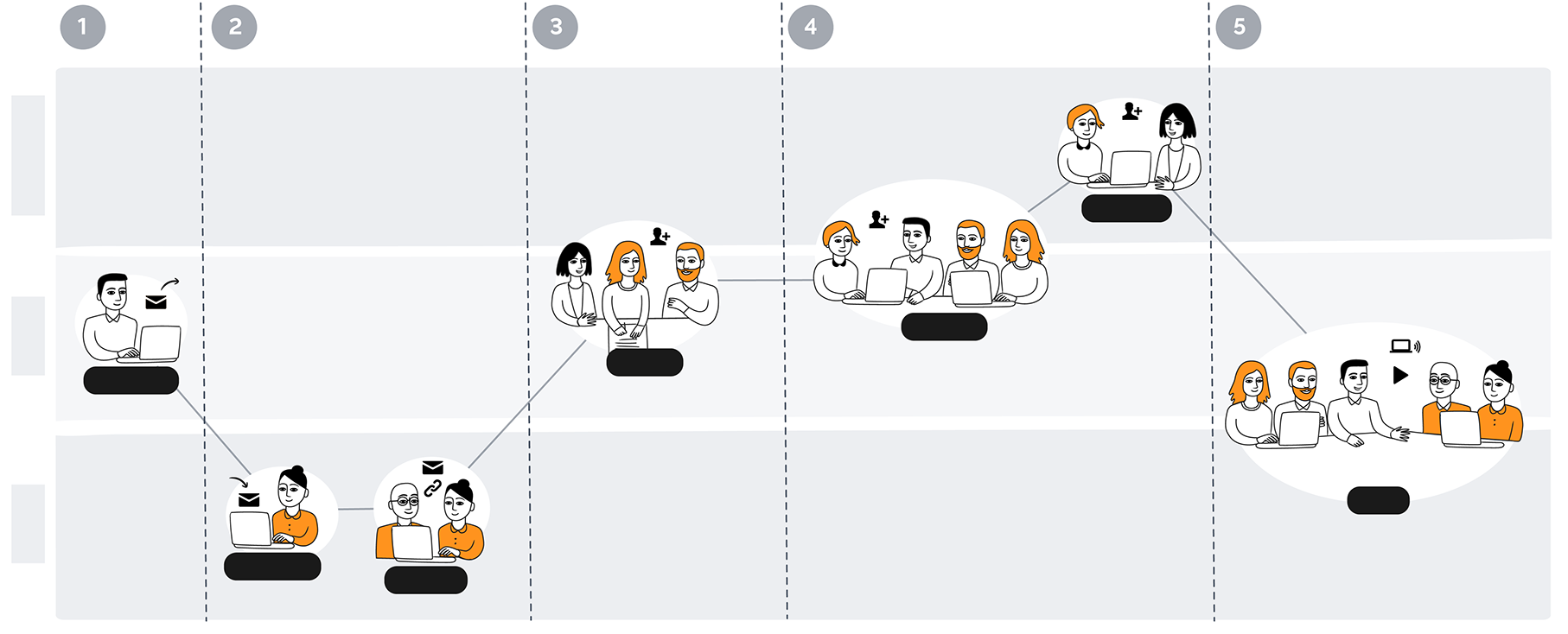
These functions are: collaboration, send and publish.
These functions are: collaboration, send and publish.

Our main questions for the share dialog were:
1. How might we prevent accidental publishing?
What we found is that users will still accidentally publish their prezis. By making it more visible what is private and what is public more prominently on the dashboard, we can minimize this issue.
2. How might we give rights to collaborators?
We collected best practices from several collaborative digital products and combined the practices that fit our goals.
Design
Our main goal was to achieve a clear separation of sharing functions based on the target audience of the user and easier recovery from accidental sharing. The final prototype used all of our findings and some UI design suggestions.
The next step was to tailor the design principles to our project, then draw wireframes on paper and in Sketch. After testing and gathering feedback on the low-fi prototype, we moved on to hi-fi mockups and prototyping (using the company's style guide and Framer.js), which we then presented to the whole product design team.
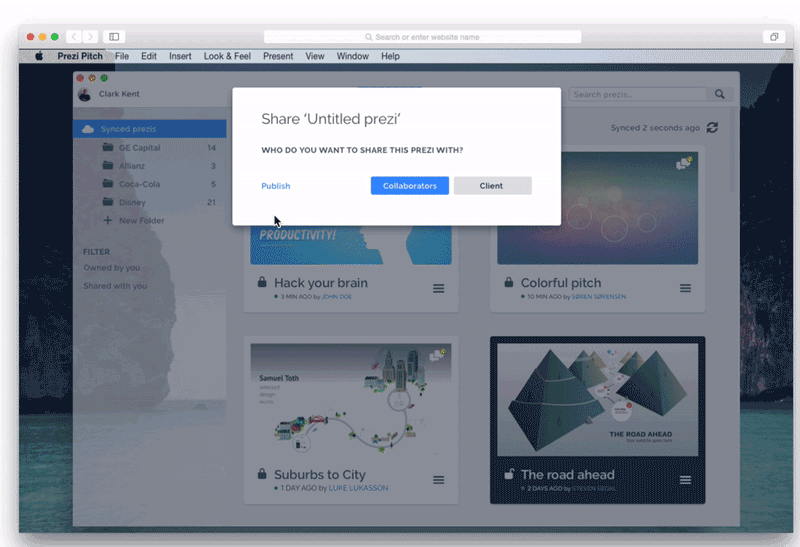
Collaboration panel, seen as the owner of the prezi.
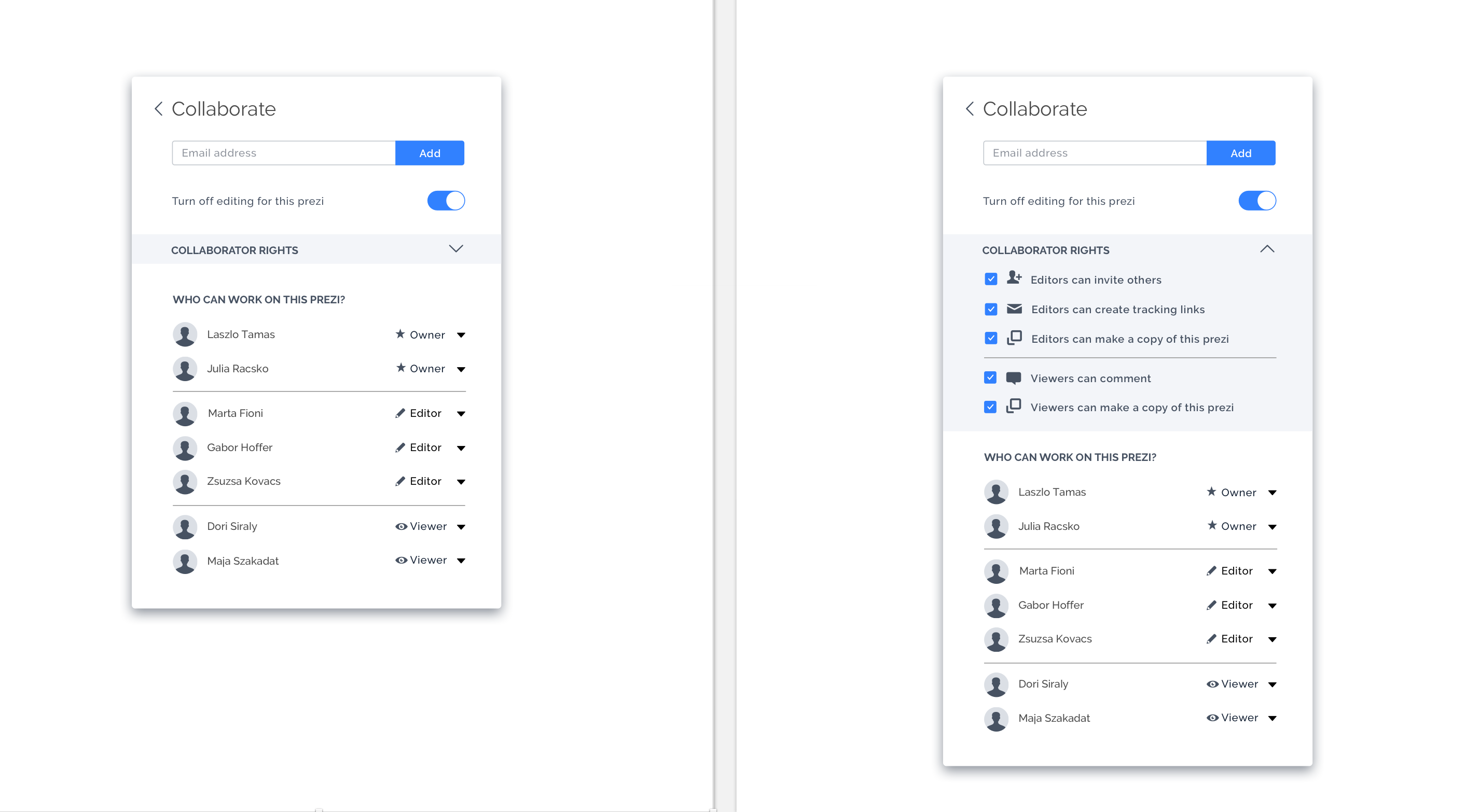
Publishing, as viewed by the owner of the prezi (top row) and by an editor (bottom row).
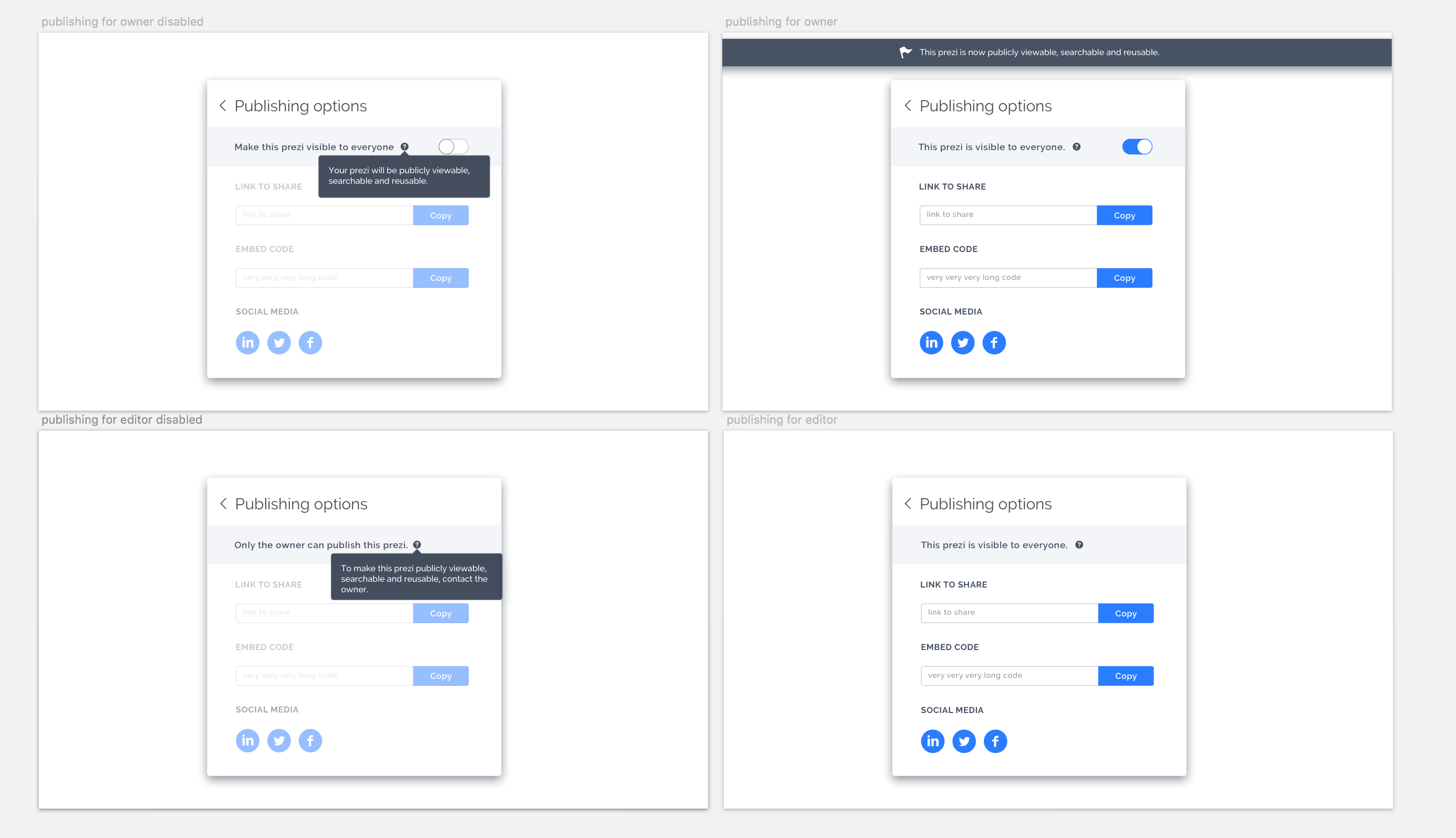
How can you arrive to the share dialog?
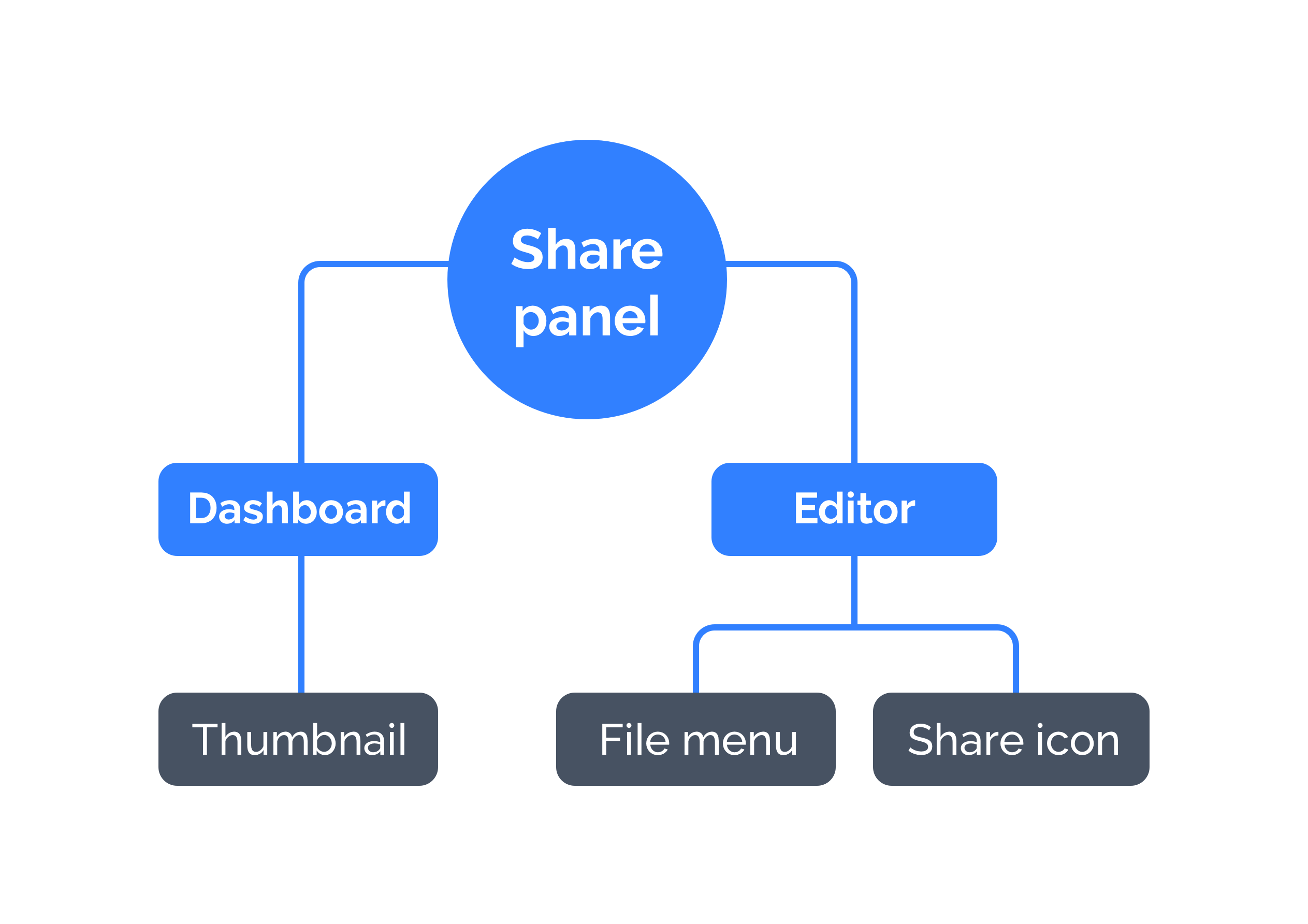
Prezi Product Design Team, intern, 2016
Mentors: Gabor Hoffer (Flame), Peter Zimon, Marta Fioni
Team: Laszlo Tamas and Julia Racsko